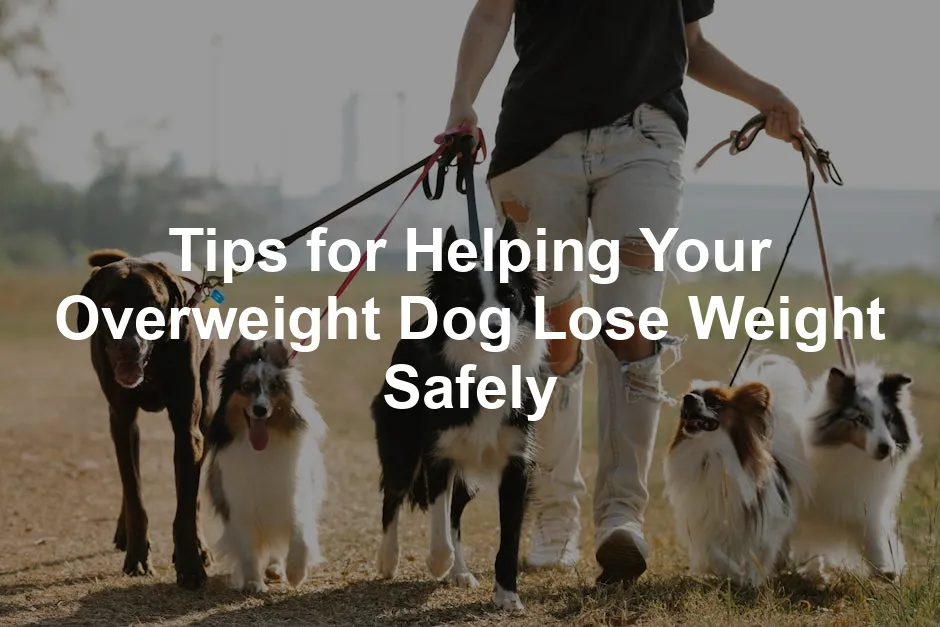Introduction
Obesity in dogs is a growing concern. Estimates suggest that 30-60% of our furry friends are overweight. That’s a staggering number! Just like humans, extra weight can lead to serious health issues. Think diabetes, arthritis, and even heart disease. Yikes!
Addressing your dog’s weight isn’t just about looks; it’s about their health and happiness. Carrying extra pounds can shorten their lifespan and make everyday activities difficult. A trim dog is often a happy dog, bounding around with energy to spare.
Before launching into any weight-loss plan, consulting your veterinarian is a must. They can provide tailored advice based on your dog’s specific needs. So, grab a seat, maybe a treat for your pup (just not too many), and let’s get to it!
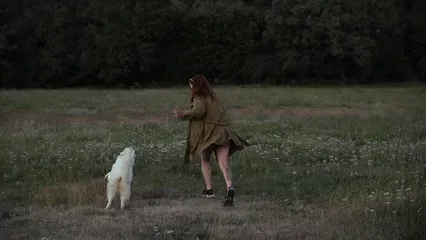
Understanding Canine Obesity
The Prevalence of Obesity in Dogs
The statistics are alarming. Approximately 30-60% of dogs in the U.S. are considered overweight or obese. That’s like a doggy epidemic! The health implications are significant. Overweight dogs face increased risks of developing diabetes, heart disease, and arthritis. These conditions can not only hinder their mobility but also lead to chronic pain and suffering.
Imagine your dog struggling to climb stairs or losing interest in their favorite game of fetch. It’s heartbreaking. Keeping your dog at a healthy weight is essential for their wellbeing and longevity. A lean dog is typically more energetic, playful, and vibrant.
To help keep your dog healthy and fit, consider the PetSafe Healthy Pet Gravity Feeder. This feeder helps control portion sizes and makes mealtime easier for your pup, allowing them to eat at their own pace while preventing overeating.
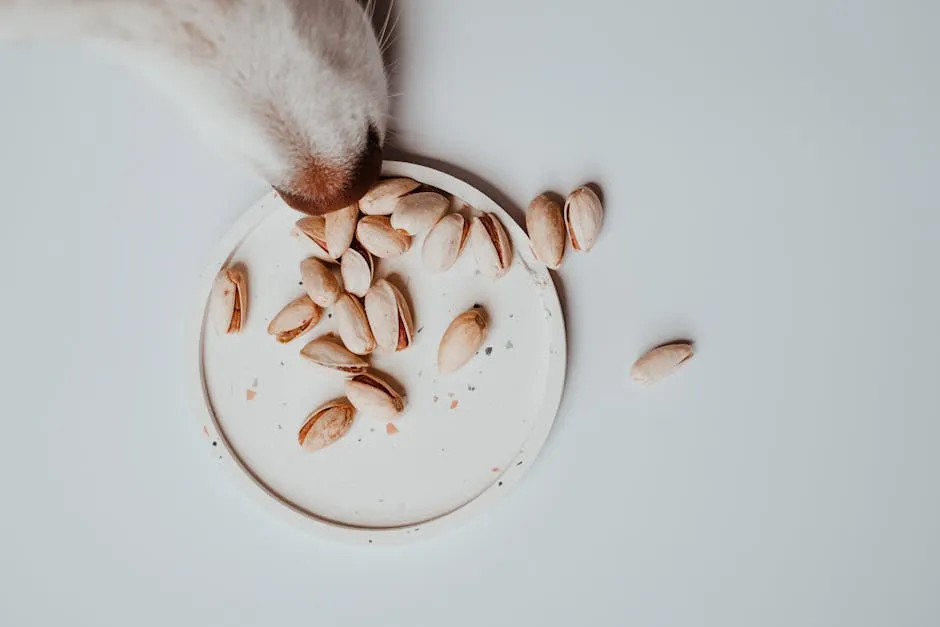
Identifying if Your Dog is Overweight
Wondering if your pooch needs to shed some pounds? Start with a body condition score (BCS). This handy tool helps you assess your dog’s weight visually. Ideally, your dog should have an hourglass shape when viewed from above. You should easily feel their ribs without excess fat covering them.
If you can’t feel those ribs, or if your dog has a thick waist and sagging belly, it’s time to take action. Other signs of being overweight include a reluctance to exercise, excessive panting, or a general lack of enthusiasm for activities they once loved. If any of these sound familiar, it might be time for a vet visit!
Speaking of keeping your pup active, the FitBark GPS Dog Activity Monitor is a fantastic tool to track your dog’s activity levels. It helps you ensure they’re getting enough exercise and staying healthy!
Remember, a little extra love in the form of treats is okay, but too much can lead to a lifetime of health issues. Let’s keep those tails wagging!

Creating a Weight Loss Plan
Consult Your Veterinarian
First and foremost, a trip to the vet is vital. Don’t let your furry friend embark on a weight loss journey without expert guidance! Your vet will rule out any underlying health conditions that might be affecting your dog’s weight. Conditions like hypothyroidism or Cushing’s disease can sneak up on your pup, complicating weight loss efforts.
Once health issues are addressed, collaborate with your veterinarian on a tailored weight loss plan. They can provide insights into your dog’s specific caloric needs and help outline a safe and effective strategy. Think of it as crafting a roadmap to a healthier, happier dog!
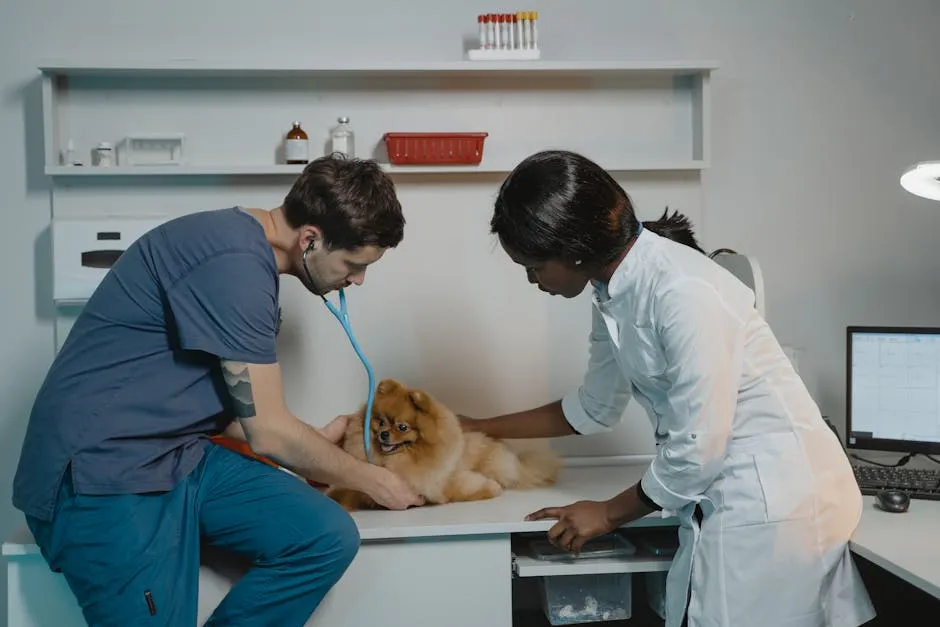
Setting Realistic Goals
Now that you’ve got a plan, it’s time to set some goals. A recommended weight loss rate is about 1-2% of your dog’s body weight per week. This slow and steady approach prevents any drastic changes that could harm your pup’s health.
Next, establish a target weight based on your dog’s breed and age. Each breed has its ideal weight range, so a quick check with your vet or a breed standard chart can be helpful. Remember, a happy dog is a healthy dog, and we want to get them there safely!
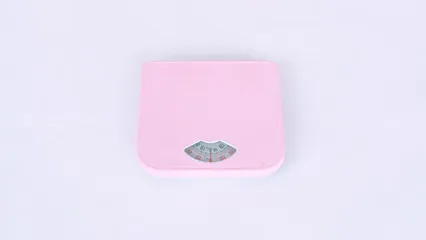
Caloric Needs and Diet Adjustments
Time to talk calories! To help your dog shed those extra pounds, you’ll need to calculate their daily caloric needs. This calculation considers factors like your dog’s current weight, age, and activity level. Your vet can help with this, ensuring your calculations are spot on.
Switching to a high-protein, low-carb diet is a smart move. Dogs thrive on protein, and it helps maintain their muscle mass while losing fat. Look for weight loss foods or veterinary diets specifically designed for this purpose. These diets are formulated to provide essential nutrients while keeping calorie counts low.
To help with portion control, consider using PetFusion Ultimate Dog Training Pads. These pads are great for house training and can also be used to help control portion sizes by measuring your dog’s food accurately.
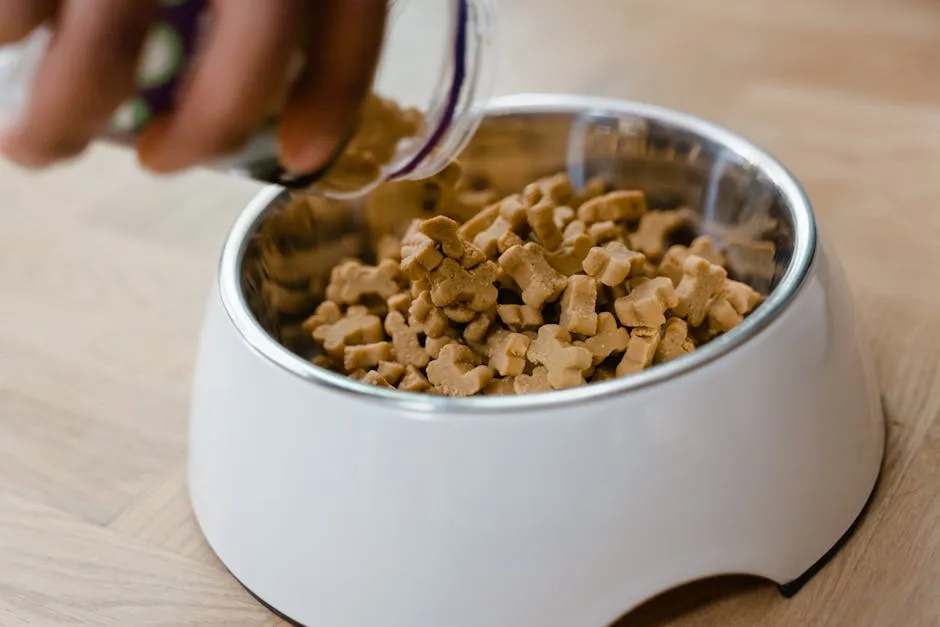
Meal Portion Control
Now, let’s discuss portion control. Measuring your dog’s food accurately is crucial. It’s tempting to eyeball it, but that can lead to overfeeding. Consider using a food scale for precision—it’s more reliable than cups, which can vary in size and shape.
To help your dog eat slower, try using puzzle feeders. These clever devices make mealtime a fun challenge. Your dog will enjoy the game while avoiding the risk of gulping down their food too quickly. Remember, portion control is a key player in your dog’s weight loss success!
Gradual Transition to New Diet
Switching your dog’s diet can be a delicate matter. A sudden change can upset their stomach and lead to unwanted messes—nobody wants that! To ease into a new diet, start slowly. Mix a small amount of the new food with their regular kibble.
A suggested timeline is about a week. For the first three days, mix 25% new food with 75% old food. Then, increase the new food to 50% for another three days. Finally, shift to 75% new food for the last few days before fully transitioning. This gradual approach helps your dog adjust without tummy troubles. If they show signs of discomfort, slow down the transition.

Exercise: An Essential Component
Importance of Regular Exercise
Exercise isn’t just fun; it’s crucial for weight loss and overall health. Regular activity helps burn calories, builds muscle, and boosts energy levels. Think of it as a magic wand for your dog’s well-being! A chubby pup might start to look like a lean, mean fetching machine with the right amount of exercise.
Recommended daily exercise varies by breed. Smaller breeds need about 30 minutes of physical activity, while larger breeds may require up to 90 minutes. A quick chat with your veterinarian can provide tailored advice based on your dog’s specific needs.

Types of Exercises
When it comes to exercise, variety is the spice of life! Here are some fun activities to consider:
- Walking: A daily stroll can work wonders. Try different routes to keep things fresh.
- Fetch: This classic game can turn any yard into a workout zone. Just avoid the neighbor’s prized flower bed.
- Swimming: Perfect for hot days! Swimming is low-impact and great for dogs with joint issues.
To keep exercise enjoyable and safe, avoid extreme heat. Dogs can overheat quickly, so opt for early morning or late evening walks. If your dog has sensitive feet, consider using Dog Booties for Hot Pavement. It’s a small investment for paw protection!
Incorporate playtime into your routine. Engaging your dog through games can make exercise feel less like a chore. The key is to keep it fun and light-hearted. Before you know it, both of you will look forward to exercise sessions!

Incorporating Playtime
Playtime is vital for your dog’s health. It’s not just about fun; it helps them shed those extra pounds. Engaging in play keeps your dog active and happy. Plus, it strengthens the bond between you two—who doesn’t love a good game of fetch?
Indoor activities are great for those rainy days. Try setting up an obstacle course with cushions and chairs. You can even throw in a few treats to keep them motivated! Tug-of-war is another excellent way to get them moving. Just remember, you’re the referee—no cheating allowed!
Outdoor play is equally essential. Daily walks are a must, but why not spice it up? Take different routes or visit a dog park. Games like frisbee or hide-and-seek stimulate their minds. Plus, they get to socialize with other pups. Everybody wins!

Strategies to Curb Begging and Overeating
Understanding Begging Behavior
Dogs are master beggars. But let’s be real: not all begging indicates hunger. Sometimes, it’s just attention-seeking. If your dog is looking at you with those big, soulful eyes, it might be time to decipher their intentions.
To manage begging, consider PetSafe Busy Buddy Bristle Bone Dog Toy. They can help regulate meal times and portions. When your dog begs, distract them with toys or playtime instead. Instead of food, give them belly rubs or praise. They’ll learn that love doesn’t always come from the treat jar!
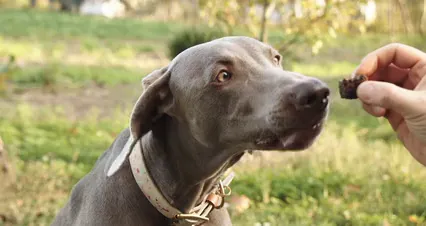
Healthy Treat Management
Treats can be tricky. They should only make up about 10% of your dog’s daily calories. This keeps their diet balanced while still rewarding good behavior. Instead of high-calorie options, consider low-calorie treats. Fresh veggies like carrots or green beans are excellent choices!
When training, use these low-calorie options. Remember to count treats as part of their daily intake. This way, you’re keeping their weight in check while still giving them a little something special. After all, a few veggies never hurt anyone!

Monitoring Progress and Adjusting the Plan
Regular Check-Ups
Regular veterinary check-ups are vital in your dog’s weight-loss journey. Your vet will track your dog’s progress and adjust the plan as needed. Think of them as the personal trainer for your pup!
How often should you visit? Initially, every week or two is a good start. After a month, if your dog is losing weight steadily, you can switch to every four to six weeks. This ensures any potential health issues are caught early. Plus, it’s a great excuse for your dog to get some extra love and attention from their favorite vet!
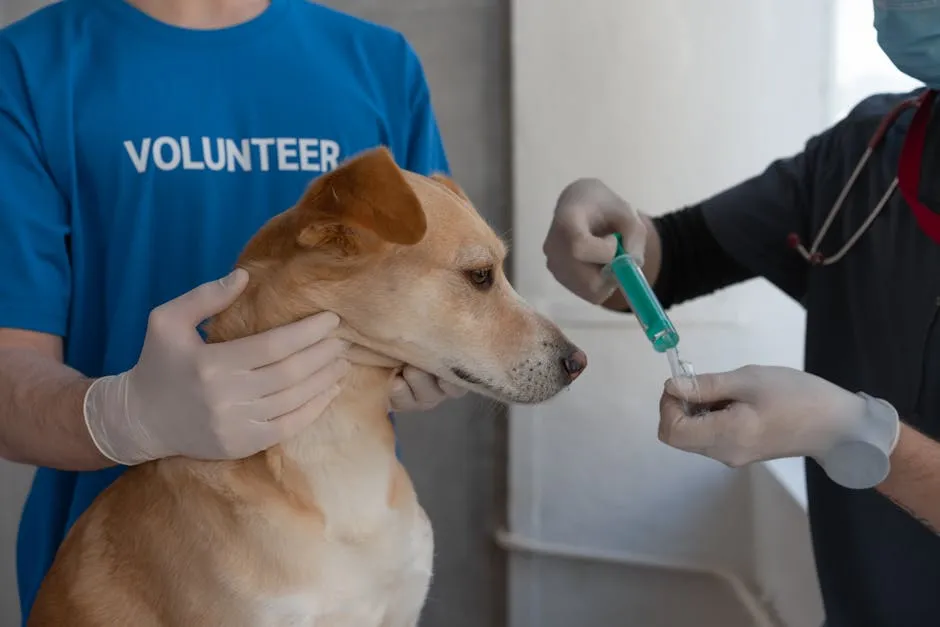
Adjusting Diet and Exercise Based on Progress
As your dog sheds pounds, it’s essential to adjust their diet and exercise routine. Noticing slower weight loss? It might be time to re-evaluate their food intake or exercise intensity. Checking in with your vet about the current caloric needs can help fine-tune their meals.
Keep an eye on their body condition score. If your dog is still a bit on the chubby side, consider reducing portion sizes or switching to a high-protein, low-carb diet. For this, the Royal Canin Veterinary Diet Canine Satiety Support is an excellent choice. This diet is designed specifically for weight management, ensuring your dog gets the nutrients they need without the extra calories.
Remember, weight loss isn’t a sprint; it’s a marathon! Patience and consistency are key. Gradual changes lead to lasting results, and your dog will thank you for it with wagging tails and happy barks.

FAQs
How long will it take for my dog to lose weight?
Weight loss duration depends on various factors. These include your dog’s starting weight, age, and activity level. Generally, a safe weight loss rate is 1-2% of body weight per week.
Can I still give my dog treats while they are losing weight?
Absolutely! Just keep treats to around 10% of their daily calories. Opt for low-calorie treats like fresh veggies and ensure they fit within the overall calorie limit.
What should I do if my dog isn’t losing weight despite following the plan?
If weight loss stalls, consult your vet. They can check for underlying health conditions like hypothyroidism or Cushing’s syndrome. Adjustments to diet or exercise may also be necessary.
Are certain breeds more prone to obesity?
Yes, some breeds are genetically predisposed to weight gain. Breeds like Labradors and Dachshunds often struggle with obesity. Regular vet check-ups and tailored weight management plans are essential for these breeds.
How often should I exercise my dog?
Exercise recommendations vary by age and breed. Generally, aim for at least 30 minutes of activity daily for smaller breeds and up to 90 minutes for larger ones. Always consult your vet for the best plan based on your dog’s needs.
Please let us know what you think about our content by leaving a comment down below!
Thank you for reading till here 🙂
All images from Pexels

